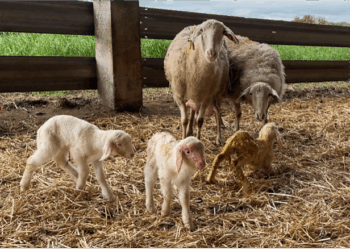What is footrot?
Footrot is an infectious disease that produces lameness, and is caused by Dichelobacter nodosus and Fusobacterium necrophorum. These anaerobic pathogens are favoured in hot and humid conditions.
The disease causes major losses, especially in years when the conditions favour its development.
How was the trial carried out?
The objective of the study was to demonstrate the safety and efficacy of vaccination with Footguard. The field trial was carried out on two endemic farms in Rio Grande do Sul, Brazil, between May and December.
140 sheep were included, 70 from each farm, with an average age of eight months. This population was divided into two groups, one of which was given saline solution (placebo) and the other the Footguard vaccine.
What were the results?
The vaccinated animals did not show any local or general reactions compared to the placebo group. Nor were any temperature increases observed in either group.
Footguard showed an 83.3% reduction in clinical signs following an outbreak of footrot 90 days after vaccination. The percentage of animals affected by group was:
– Control group: 17.15%
– Vaccinated group: 2.85%
In addition, the serological results showed a good response to the vaccine, both in the primary vaccination and revaccination (Graph 1).
According to the results obtained, Footguard was shown to be a safe and effective vaccine.
The cause of the outbreak was also analysed and the presence of Dichelobacter nodosus Type D was identified.

Días después de la vacunación: days after vaccination
Valor de anticuerpos: antibody levels
Vaccination, together with other preventive measures, allows the disease to be eradicated.
Conclusions
– The Footguard vaccine is effective and safe against footrot.
– Vaccination every 6 months allows a high level of protection to be maintained.
– Prevention with management and vaccination, helps to control the disease.




